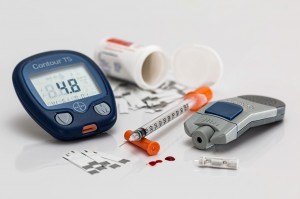Medical devices have to be designed so that people can use them easily and reliably in order to simplify the prevention, diagnosis and treatment of diseases. Development of convenient graphical user interface (GUI) for medical devices is especially important, as low usability of UI may have dramatic consequences.
Numerous studies have confirmed that poorly designed medical device interfaces has a significant impact on the growth of the use errors and may represent a hazard to human health and life. The FDA receives on average 100,000 medical device incident reports per year, and more than a third involve user error. [1] For example, a typical user of a drug delivery medical device may be elderly, impaired, distracted, rushing, or overconfident in their abilities in spite of having not read the instructions. In this case, self-administration of drugs may lead to serious or fatal injury.
Therefore, the question for medical device manufacturers is how to design their products more effectively and make them safer to use. The answer lies in the incorporating of Human Factors Engineering (HFE) throughout a product’s development. HFE focuses on hazard scenarios related to device and use failures. When applied to medical devices, it takes into consideration the following factors:
- who the medical device users are (patients, patient family members, doctors, technicians, nurses, etc.)
- under what conditions the medical device will be used (use environment, situational factors)
- what use-related hazards might arise
Addressing human factors throughout the entire development process helps software engineers to make effective choices regarding font size, use of color, interactive mechanisms, data entry, and other important user interface features.
It not only improves the usability and safety of medical devices, but also brings many benefits to manufacturers: satisfied customers, positive brand perception, reduced project budget, and shortened time-to-market of a product. In general, implementation of HFE design techniques early and throughout the development process results in safer and more efficient medical devices.
Sources:
- http://www.invetech.com.au/newsroom/viewpoints/user-centred-design-to-develop-better-safer-products/
- http://www.mdtmag.com/product-releases/2010/03/building-efficient-and-effective-graphical-user-interfaces-medical-devices
- http://www.ximedica.com/People/LivingInnovationBlog/TabId/108/PostId/303/graphical-user-interface-in-medical-device-design-do-it-early.aspx


